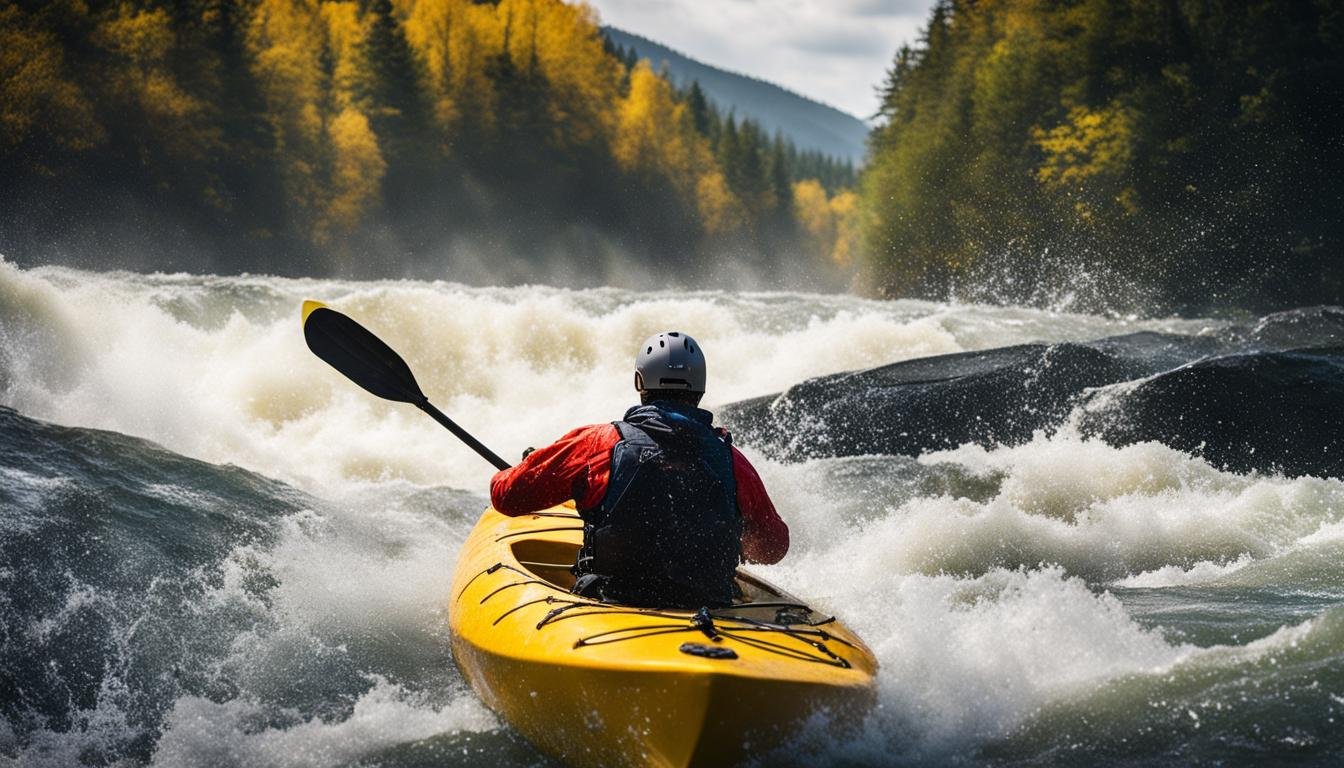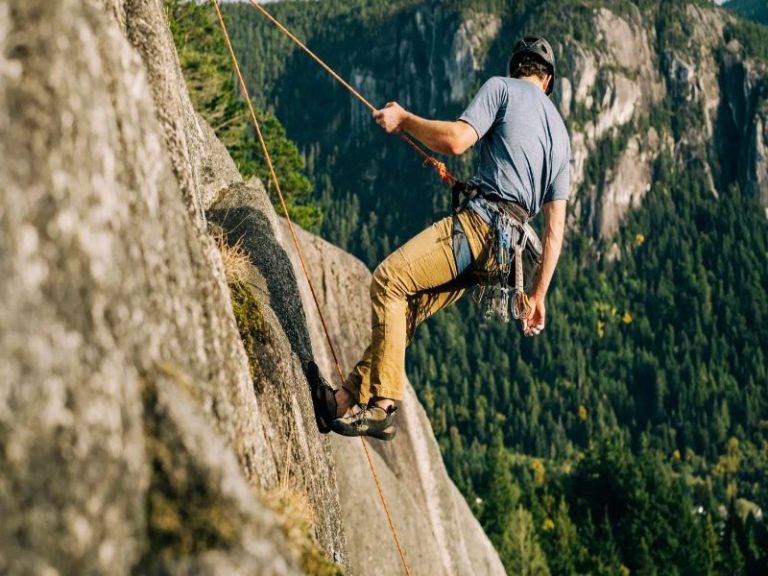Do You Get Wet Kayaking?
Kayaking is a popular water activity that brings you close to nature and the thrill of being on the water. But one question that often comes up is, do you get wet kayaking? The short answer is yes, you can expect to get wet while kayaking since it involves being on the water. However, the level of wetness can vary depending on several factors such as your skill level, the type of kayak you use, and the weather conditions.
While it’s impossible to stay completely dry while kayaking, there are ways to minimize wetness and ensure a comfortable experience. This article will delve into the factors that influence wetness while kayaking, provide tips on staying dry, and offer guidance on exiting the kayak without getting wet.
Key Takeaways:
- Kayaking involves being on the water, so getting wet is unavoidable.
- The level of wetness can vary based on your skill level, kayak type, and weather conditions.
- Wearing quick-drying and waterproof clothing can help keep you dry while kayaking.
- Utilizing a spray skirt and bilge pump can prevent water from entering the kayak.
- Exiting the kayak without getting wet requires proper technique and caution.
Factors Influencing Wetness While Kayaking
When it comes to staying dry while kayaking, there are several factors that can influence the level of wetness you experience. It’s important to consider these factors to make informed choices and have a comfortable kayaking experience.
Paddler’s Skill Level
Your skill level plays a significant role in how wet you’ll get while kayaking. Skilled kayakers are able to navigate the water with precision, minimizing the chances of getting splashed or soaked. Beginners, on the other hand, may find themselves experiencing more wetness as they learn to maneuver their kayak.
Type of Kayak
The type of kayak you choose can also affect how wet you’ll get. Sit-in kayaks provide more protection from splashes and waves as they have a enclosed cockpit that helps to keep water out. Sit-on-top kayaks, on the other hand, leave you more exposed to the elements and are more prone to getting wet. Consider your preferences and the conditions you’ll be kayaking in when selecting a kayak.
Weather Conditions
The weather conditions on the day of your kayaking trip can have a significant impact on how wet you’ll get. Windy or stormy weather can create rougher waters, increasing the chances of getting splashed or even capsizing. Calm and sunny conditions, on the other hand, may allow for a drier kayaking experience. Always check the weather forecast and be prepared for the conditions you’ll be facing.
| Factors | Influences |
|---|---|
| Paddler’s Skill Level | Ability to navigate and avoid splashes |
| Type of Kayak | Sit-in kayaks offer more protection |
| Weather Conditions | Rough waters increase chances of getting wet |
Tips to Stay Dry While Kayaking
When it comes to staying dry while kayaking, there are several tips and techniques you can use to ensure a comfortable and enjoyable experience. Here are some key strategies:
- Choose the right gear: Invest in a wet suit or drysuit designed specifically for kayaking. These waterproof garments provide insulation and keep you dry even in wet conditions. Additionally, consider wearing quick-drying and moisture-wicking clothing to stay comfortable throughout your kayaking adventure.
- Utilize waterproof equipment: Equip yourself with a spray skirt, a valuable piece of gear that seals the cockpit of your kayak. This helps to prevent water from entering the kayak and keeps you dry. Additionally, invest in dry bags to protect your belongings from getting wet during your kayaking trip.
- Practice water sports safety: It is essential to prioritize safety while kayaking. This includes wearing a personal flotation device (PFD), ensuring you have a whistle or signaling device, and being aware of your surroundings and weather conditions. By practicing proper water sports safety, you can minimize the risk of capsizing and getting excessively wet.
In summary, staying dry while kayaking is achievable with the right preparations. By wearing appropriate gear, utilizing waterproof equipment, and practicing water sports safety, you can enjoy your kayaking adventure while staying comfortable and dry. Remember to always prioritize safety and follow these tips to make the most of your time on the water.
Exiting the Kayak Without Getting Wet
Exiting the kayak without getting wet requires proper technique and caution. Follow these steps to ensure a dry and safe exit from the kayak:
- Choose a location where the pier or dock is in proximity to the water level. This will facilitate an exit without getting wet.
- Position the kayak carefully near the dock and use a rope to fasten it. This will prevent the kayak from drifting away while you exit.
- Use the dock as a fulcrum. Place one hand on the dock while keeping the other hand on the kayak for stability.
- Lift your body and legs onto the dock, using your core strength. This will help you avoid getting wet and maintain balance.
Remember to always practice water sports safety when kayaking. By following these steps and using proper technique, you can ensure a dry and safe exit from the kayak.
Expert Tip:
“When exiting the kayak, make sure to maintain three points of contact at all times – two hands and one foot, or two feet and one hand. This will help you maintain stability and minimize the risk of falling into the water.” – Kayaking Safety Expert
With these kayaking tips and techniques, you can enjoy your water activities while minimizing wetness and ensuring a comfortable experience. By understanding the factors that influence wetness, using the right gear, and practicing water sports safety, you can confidently navigate the waters without getting completely soaked.
| Factors | Techniques |
|---|---|
| Skill Level | Practice proper paddling techniques and improve your skills to stay more upright and minimize water splashes. |
| Kayak Type | Choose a sit-in kayak for additional protection from splashes and waves compared to sit-on-top kayaks. |
| Weather Conditions | Avoid kayaking in strong winds or heavy rain to reduce the chances of getting wet. Check the weather forecast before heading out. |
By considering these factors and implementing the suggested techniques, you can enhance your kayaking experience and stay relatively dry. Remember to always prioritize safety and enjoy the beauty of the water!
Conclusion
While kayaking, it’s almost impossible to stay completely dry, but there are ways to minimize wetness and make your experience more comfortable. By understanding the factors that influence wetness, such as your skill level, kayak type, and weather conditions, you can make informed choices to stay as dry as possible.
One key tip is to invest in the right gear. Consider using a spray skirt, which can seal the cockpit of your kayak and prevent water from entering. Wearing quick-drying and waterproof clothing can also help keep your body dry. And in colder conditions, don’t forget to cover up exposed skin or even consider wearing a drysuit for added protection.
Remember, practicing proper technique and water sports safety is crucial. This includes learning how to exit the kayak without getting wet. Choosing a location where the dock or pier is close to the water level, securing your kayak with a rope, and using the dock as leverage can all help you make a dry and safe exit.
So, even though getting wet is a part of the kayaking experience, with the right preparations and precautions, you can still enjoy the beauty of the water without being completely immersed in it. Follow these tips and have a great time exploring the exciting world of water activities!
FAQ
Do you get wet while kayaking?
Yes, kayaking involves being on the water, so getting wet is guaranteed. However, the amount of wetness can vary depending on factors such as skill level, kayak type, and weather conditions.
What factors influence wetness while kayaking?
Several factors can influence wetness while kayaking, including skill level, kayak type, and weather conditions. Skilled kayakers can stay fairly dry, while beginners may experience more wetness. Sit-in kayaks offer more protection from splashes and waves compared to sit-on-top kayaks. Paddle design, length, and technique can also affect wetness.
How can I stay dry while kayaking?
To stay dry while kayaking, you can wear quick-drying and waterproof clothing, utilize a spray skirt to seal the kayak cockpit, use a bilge pump to remove excess water, cover exposed skin, and consider wearing a drysuit in colder conditions. Having proper gear and practicing water sports safety is important.
How can I exit the kayak without getting wet?
To exit the kayak without getting wet, choose a location where the pier or dock is close to the water level. Position the kayak carefully and use a rope to fasten it to the dock to prevent drifting. Use the dock as a fulcrum and lift your body and legs onto the dock to avoid getting wet. Practicing proper technique and water sports safety is crucial.







